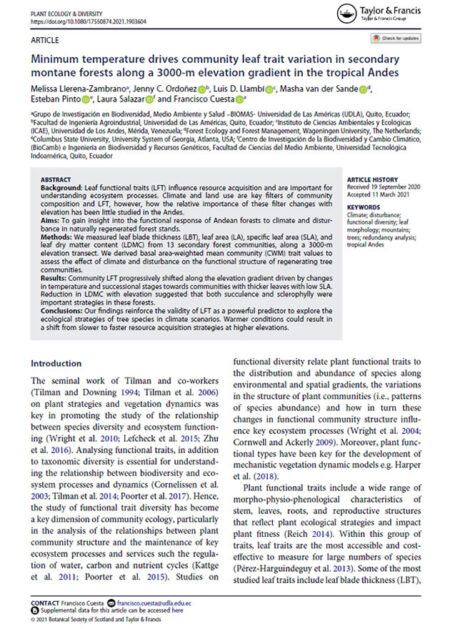To investigate life-history differentiation and an objective functional classification of tree species we analysed the demography of 29 species in subtropical montane forests in north-western Argentina.We computed 13 growth, demographic, abundance and distribution variables based on: (i) two 5-year re-measurements of stems ≥ 10 cm diameter at breast height (d.b.h.) in 8 ha of old growth forest and 4 ha of secondary forest; (ii) assessments of tree crown illumination; and (iii) sapling counts under shade and on landslides.We assessed the potential confounding effects of stem size and crown illumination on absolute stem diameter growth rate for the 24 most abundant species. As diameter increased, one species showed significant increases in growth rate and five showed significant reductions. Seventeen species grew significantly faster with increased exposure to light and we controlled for this confounding effect in the computation of diameter growth rates for subsequent analyses.A principal component analysis resulted in three meaningful and interpretable axes of demographic variation across species. The first axis (interpreted as shade tolerance) indicates that trees of species with inherently high growth rates tend to have well-exposed crowns at 10–30 cm d.b.h., have high density of trees in secondary forest and are less tolerant of shade.The second axis (turnover) shows that in old-growth forest short-lived species, with high mortality rates, size-class distributions with a steep negative slope and low dominance, persist due to high rates of recruitment (to ≥ 10 cm d.b.h.).The third axis indicates that species that colonize landslides have lower tree recruitment rates and greater growth variability in secondary forest, reflecting spatio/temporal differences in species’ recruitment linked to differences in their substrate requirements for regeneration.Maximum height and diameter are correlated with the first and second axes, indicating that higher rates of both growth and survival permit some species to attain large size.All three demographic axes depict separate trade-offs that confer competitive advantage to each ‘demographic type’ under contrasting ecological conditions (of light availability, disturbance frequency and disturbance intensity), thus underpinning species’ coexistence in dynamic forest landscapes.
Tree life histories in a montane subtropical forest: species differ independently by shade-tolerance, turnover rate and substrate preference
Autor: Easdale, Tomás
Autores secundarios: Healey, John R. Grau, H. Ricardo Malizia, Agustina
Instituciones relacionadas: CONDESAN, ICAE, Instituto Von Humboldt, EcoCiencia, Instituto de Montaña
Año: 2007
Área temática: Biodiversidad
Idioma: Inglés





